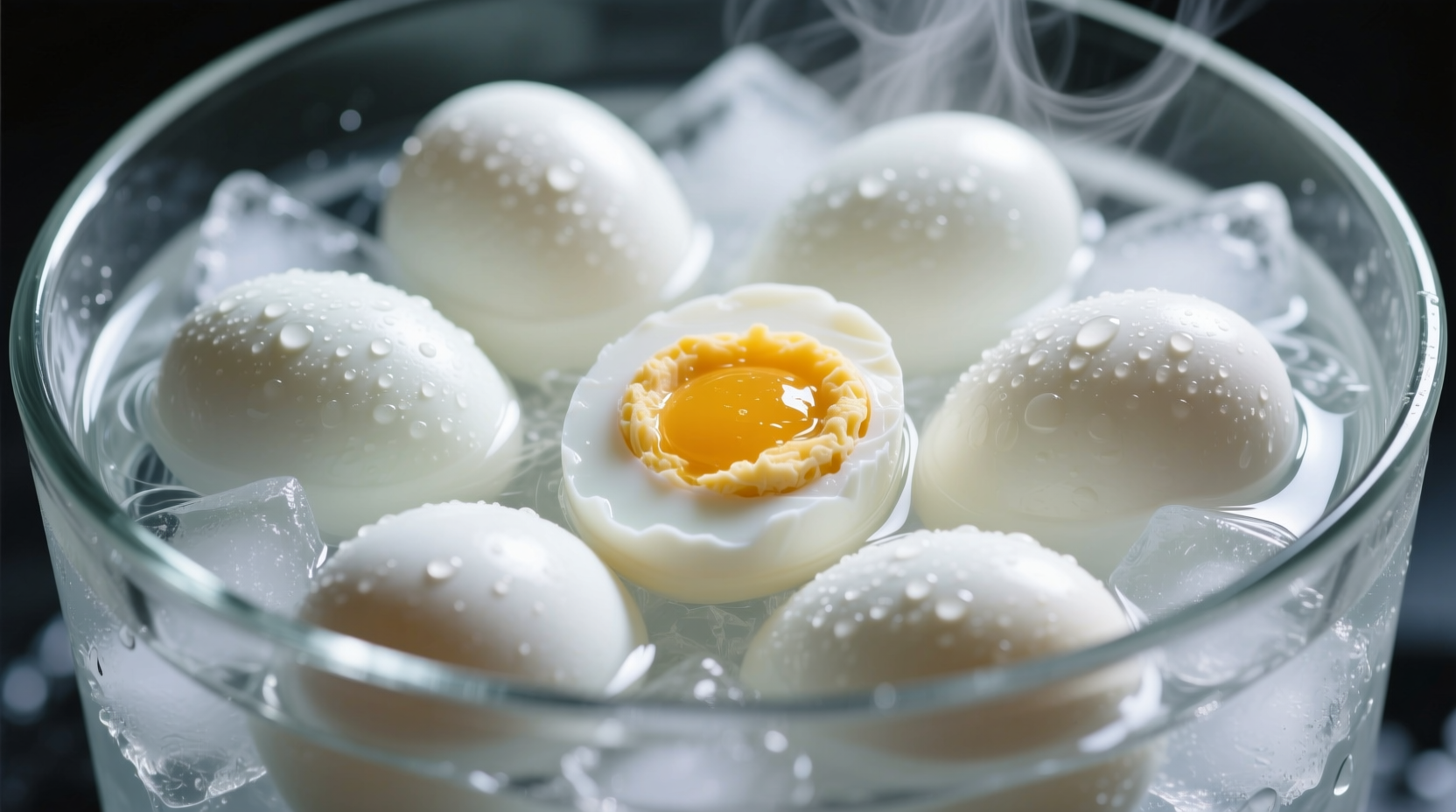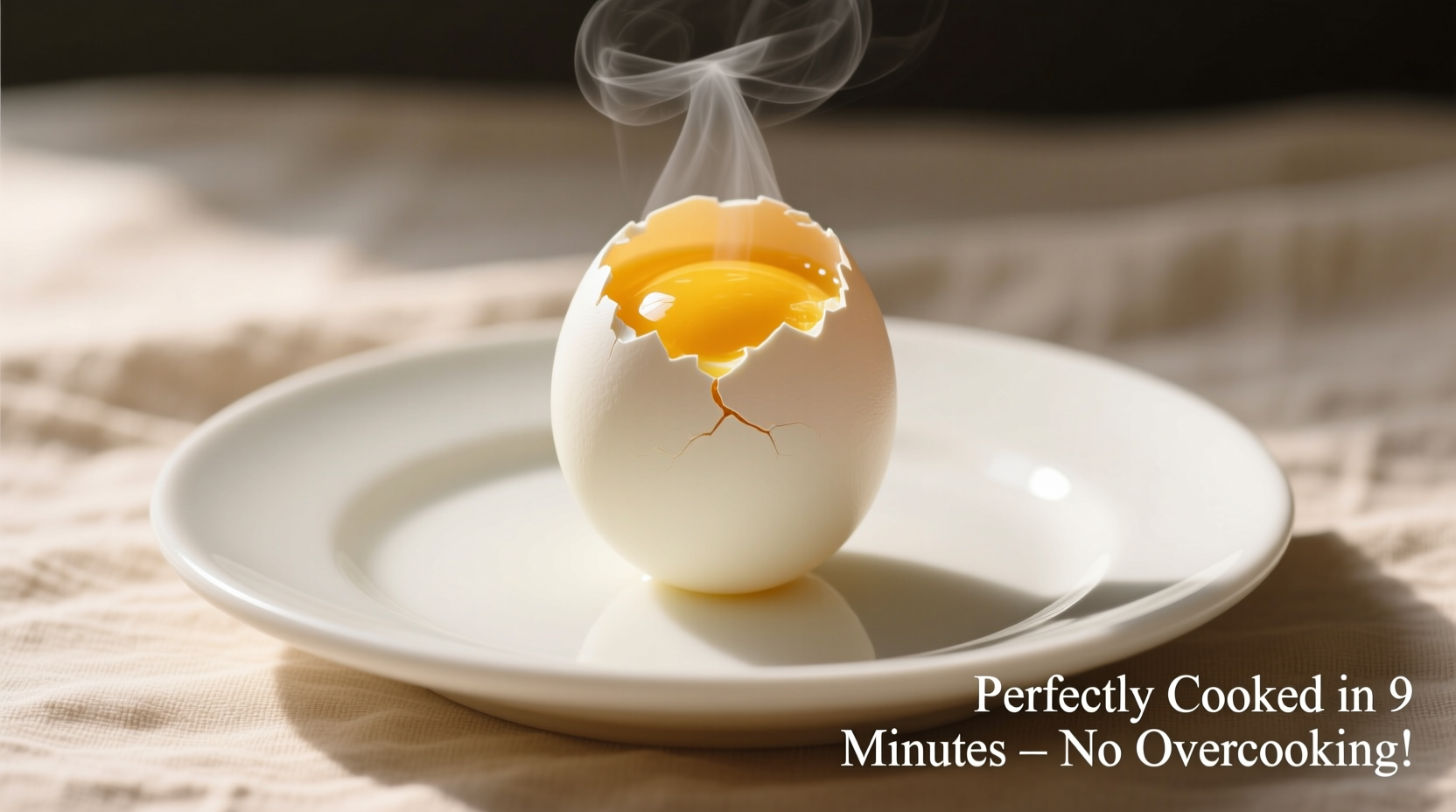The Science Behind Perfect Hard Boiled Eggs
Many home cooks struggle with hard boiled eggs because they don't understand the precise protein chemistry involved. When egg whites reach 180°F (82°C), the proteins fully coagulate without becoming rubbery. The yolk sets perfectly at 158°F (70°C), but exceeding 170°F (77°C) causes that unappetizing green-gray ring around the yolk from iron sulfide formation.

Why Traditional Methods Fail
Most people follow outdated techniques that lead to cracked shells, stubborn peeling, or overcooked yolks. Let's examine how egg cooking science has evolved:
| Time Period | Common Method | Key Limitation |
|---|---|---|
| Pre-1950s | Boil 20+ minutes | Severe overcooking, green yolks |
| 1950-1990 | Boil 15 minutes | Still frequent green rings |
| 1990-2010 | Boil 12 minutes + rest | Better but inconsistent peeling |
| 2010-Present | Precise timing + ice bath | Consistent perfect results |
The Foolproof 5-Step Method for Perfect Hard Boiled Eggs
Step 1: Proper Egg Selection and Preparation
Choose eggs that are 7-10 days old for easiest peeling - extremely fresh eggs bond tightly to their membranes. Remove eggs from the refrigerator 30 minutes before cooking to reach room temperature, preventing thermal shock and cracking. Place eggs in a single layer at the bottom of a saucepan.
Step 2: The Perfect Cooking Process
Cover eggs with 1 inch of cold water. Place over medium-high heat until water reaches a gentle boil (not a rolling boil). Immediately reduce heat to maintain a bare simmer (small bubbles occasionally breaking surface). Set timer for exactly 10-12 minutes depending on your preferred yolk firmness:
- 10 minutes: Slightly soft center, ideal for salads
- 11 minutes: Classic firm but moist center
- 12 minutes: Fully set yolk, best for meal prep
Step 3: The Critical Ice Bath
Prepare a large bowl with equal parts ice and water. When timer ends, immediately transfer eggs to the ice bath using a slotted spoon. Let them cool completely for 15 minutes - this stops cooking instantly and creates a temperature differential that separates the egg from its membrane.
Step 4: Effortless Peeling Technique
Gently tap the egg on a hard surface to create fine cracks across the entire shell. Roll the egg between your palms to loosen the shell further. Start peeling from the wider end where the air pocket resides, keeping the egg underwater for smoother results. The ice bath cooling makes peeling almost foolproof.
Step 5: Proper Storage Guidelines
Store peeled eggs in an airtight container with a damp paper towel for up to 1 week. Unpeeled eggs last up to 2 weeks in the refrigerator. Never leave hard boiled eggs at room temperature for more than 2 hours for food safety reasons.
Troubleshooting Common Problems
Certain conditions require method adjustments. Understanding these context boundaries ensures success regardless of your situation:
- High altitude cooking: Add 1-2 minutes to boiling time for every 5,000 feet above sea level as water boils at lower temperatures
- Large batch cooking: Cook no more than 12 eggs at once to maintain consistent water temperature
- Older eggs: Extremely old eggs may develop larger air pockets, requiring careful handling during peeling
- Organic/pasture-raised eggs: Often have stronger membranes; ensure proper ice bath duration
Advanced Techniques for Culinary Perfection
Professional chefs use these additional methods to achieve restaurant-quality results:
| Method | Advantages | Best For |
|---|---|---|
| Steaming | Less cracking, more consistent results | High-altitude cooking |
| Pressure cooking | 50% faster, perfect for meal prep | Large batches (6+ eggs) |
| Oven method | No water monitoring, hands-off | When stove is occupied |
| Traditional boiling | Most accessible, reliable results | Everyday cooking |
For steaming, place eggs in a steamer basket over 1 inch of boiling water. Steam for 13 minutes for medium eggs, 15 minutes for large. The gentle steam heat reduces cracking while maintaining precise temperature control. This method works particularly well at high altitudes where water boils at lower temperatures.
Why Your Eggs Might Still Have Issues
Even with perfect technique, certain factors affect results. The USDA Food Safety and Inspection Service confirms that egg freshness significantly impacts peeling difficulty (source). Eggs aged 7-10 days have optimal pH levels for easy peeling. Extremely fresh eggs (1-3 days) have lower pH, causing membranes to bond tightly to the shell.
For consistently perfect hard boiled eggs without green rings, remember that the green discoloration occurs when hydrogen in the egg white combines with sulfur in the yolk at temperatures above 170°F (77°C). The ice bath immediately halts this chemical reaction.
Practical Applications
Perfect hard boiled eggs serve as the foundation for numerous dishes. For deviled eggs, slice cooled eggs lengthwise and remove yolks. For egg salad, chop eggs finely with a pastry cutter for uniform texture. When making Nicoise salad, quarter eggs carefully for attractive presentation. The precise cooking method ensures your eggs perform perfectly in any application requiring hard boiled eggs.
Conclusion
Mastering the perfect hard boiled egg requires understanding both the culinary technique and the food science behind it. By following this precise method—room-temperature eggs, controlled simmering, exact timing, and immediate ice bath cooling—you'll achieve restaurant-quality results every time. Remember that small adjustments for altitude, egg freshness, and quantity ensure consistent success regardless of your specific circumstances.











 浙公网安备
33010002000092号
浙公网安备
33010002000092号 浙B2-20120091-4
浙B2-20120091-4